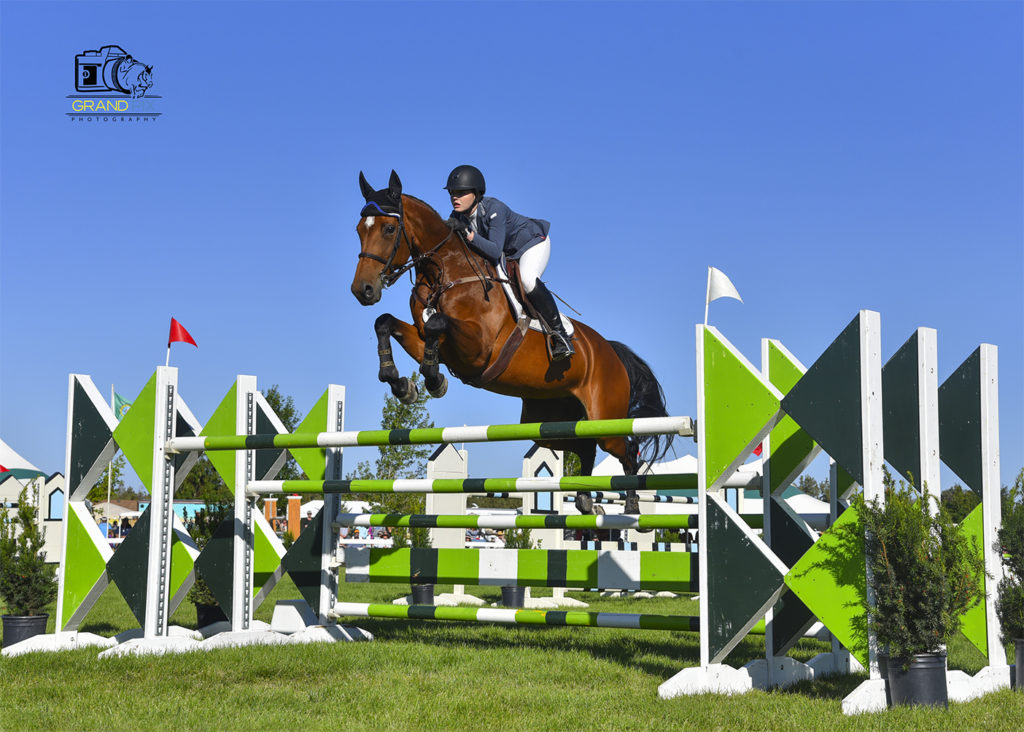
Show jumping constitutes the second most popular spectator sport in Europe, after soccer. France is credited for holding the world’s first grand prix in Paris in 1866. Jumper events in America are quickly gaining popularity thanks to the ease in understanding the rules, the display of sheer athleticism of both horse and rider, and the brilliance of the brightly colored jumps.
Jumpers are judged solely on accuracy and speed. Jumpers receive faults for knocking down rails, for refusing, or for exceeding the time allowed (please see chart below for explanation of faults). There are no subjective judging elements in these classes. Beauty, movement and grace of the horse do not count towards winning. All that matters is that the horse jumps clean (no faults) and goes fast.
Riders face a first round course of 10 to 14 jumps. Once the rider enters the ring, a whistle is blown, after which the rider has 60 seconds to start the course. Riders that complete the round without faults ride in the jump-off a timed event over a shortened course of fences. Jump-offs normally take place immediately after the first round. In the bigger money classes, such as derbies and grand prix, jump-offs occur after all the horses have completed their first round.
You will notice riders walking the course before the class starts. This is their opportunity to pace out distances between jumps, to check for footing problems, to locate things that might spook their horse, and to determine the fastest track. Often riders confer with their trainers to decide what strategy is best for their horse.
Course designers have significant leeway in the types of jumps they use and in the related distances between jumps. Jumper obstacles tend to be much spookier than hunter fences. They are brighter and airier (more gaps between the poles) and often incorporate a water element. Don’t be surprised to hear a jumper rider growl at their horse to encourage him over a particularly scary jump. Course designers may also make a course more technical by setting distances between jumps on an off stride. Thus the rider must go slower than usual to add the stride, or gallop faster to leave out the stride.
Once you get down the basic rules, watching a jumper class is pure fun. In fact, feel free to whoop and holler when your favorite horse goes clean.
Scoring Chart:
__First refusal (when the horse stops in front of or runs around a jump): 3 faults
__Second refusal: 6 faults
__Third refusal: elimination
__Knockdown of an obstacle: 4 faults
__Fall of horse or rider: elimination
__Rider off course: elimination
__Exceeding the time allowed: 1/4 fault per second over the time allowed
__Exceeding the time allowed in the jump-off: 1 fault per second over the time allowed
